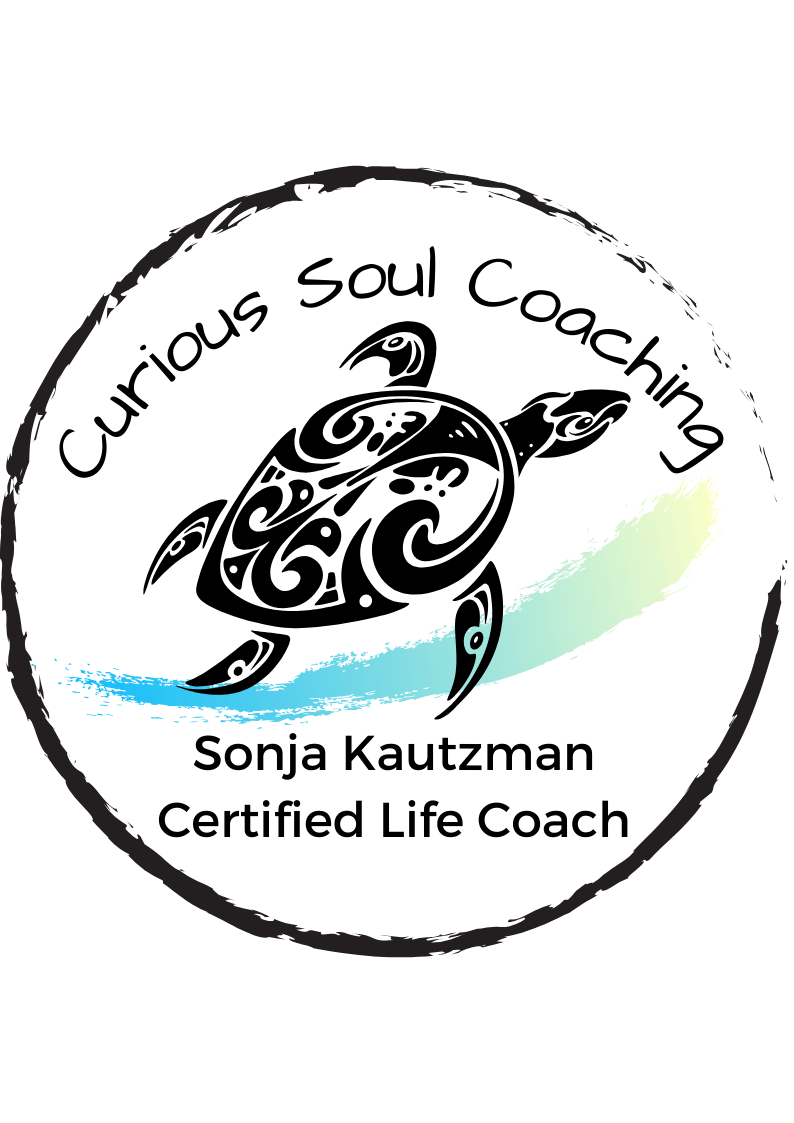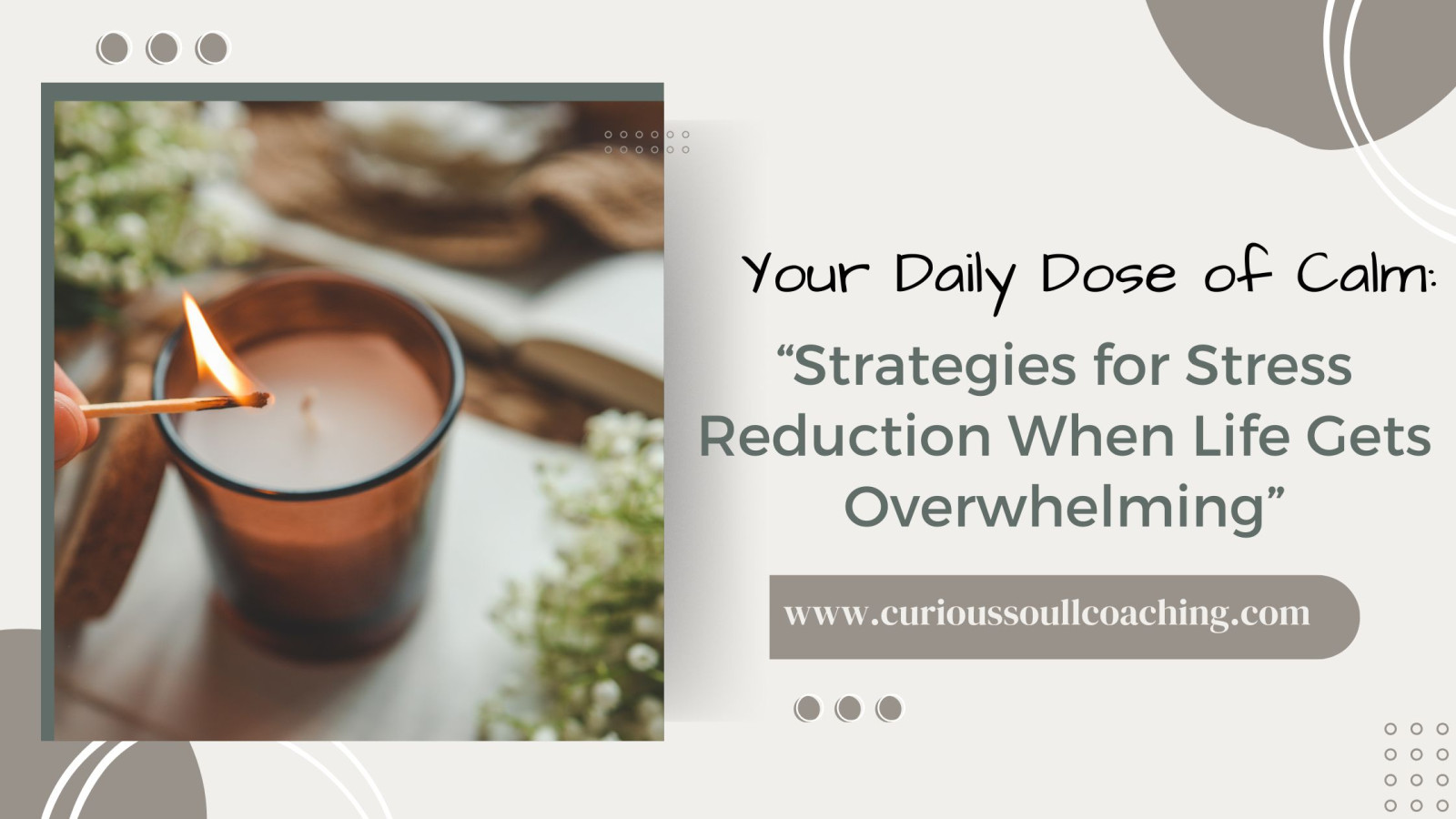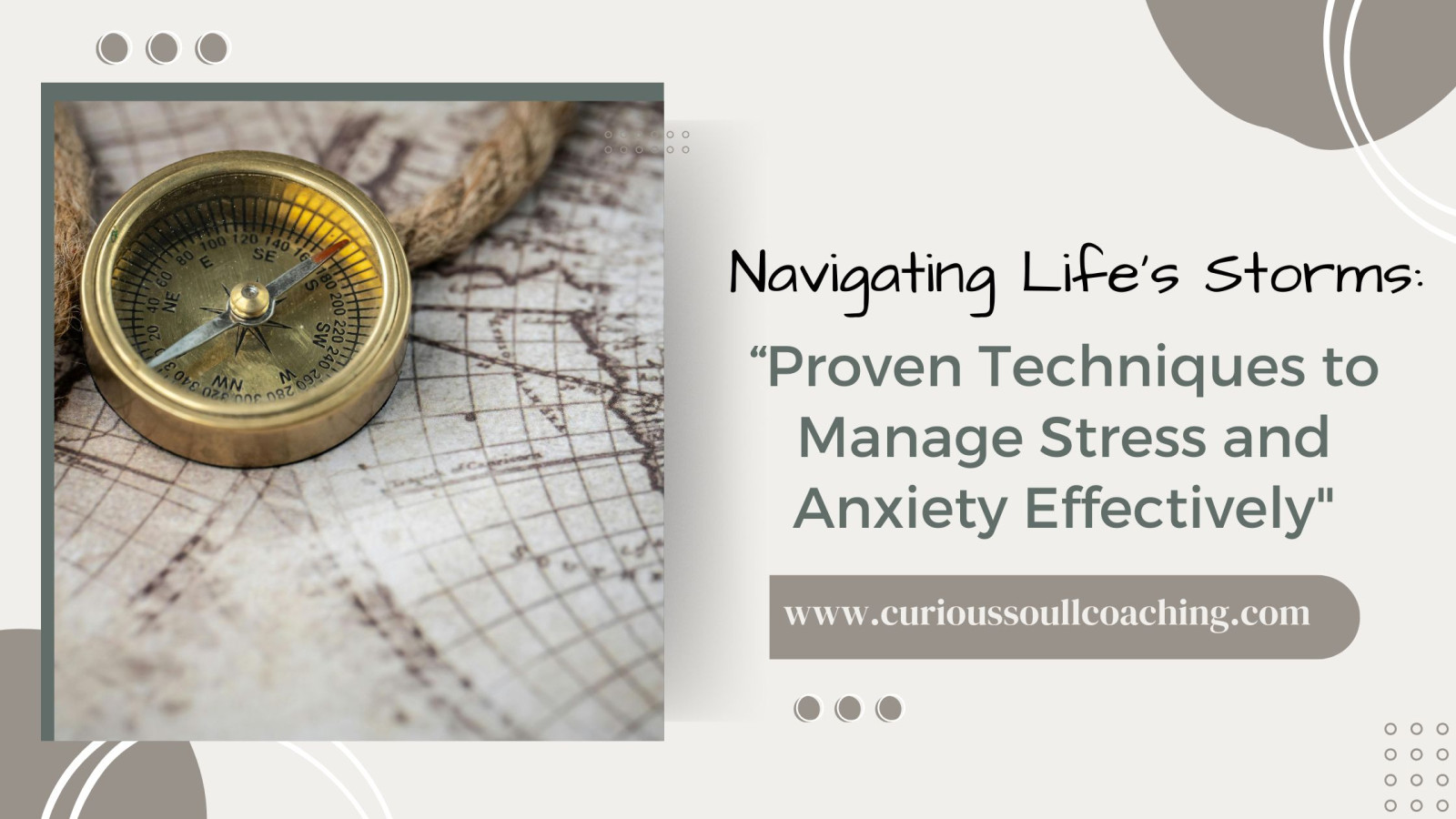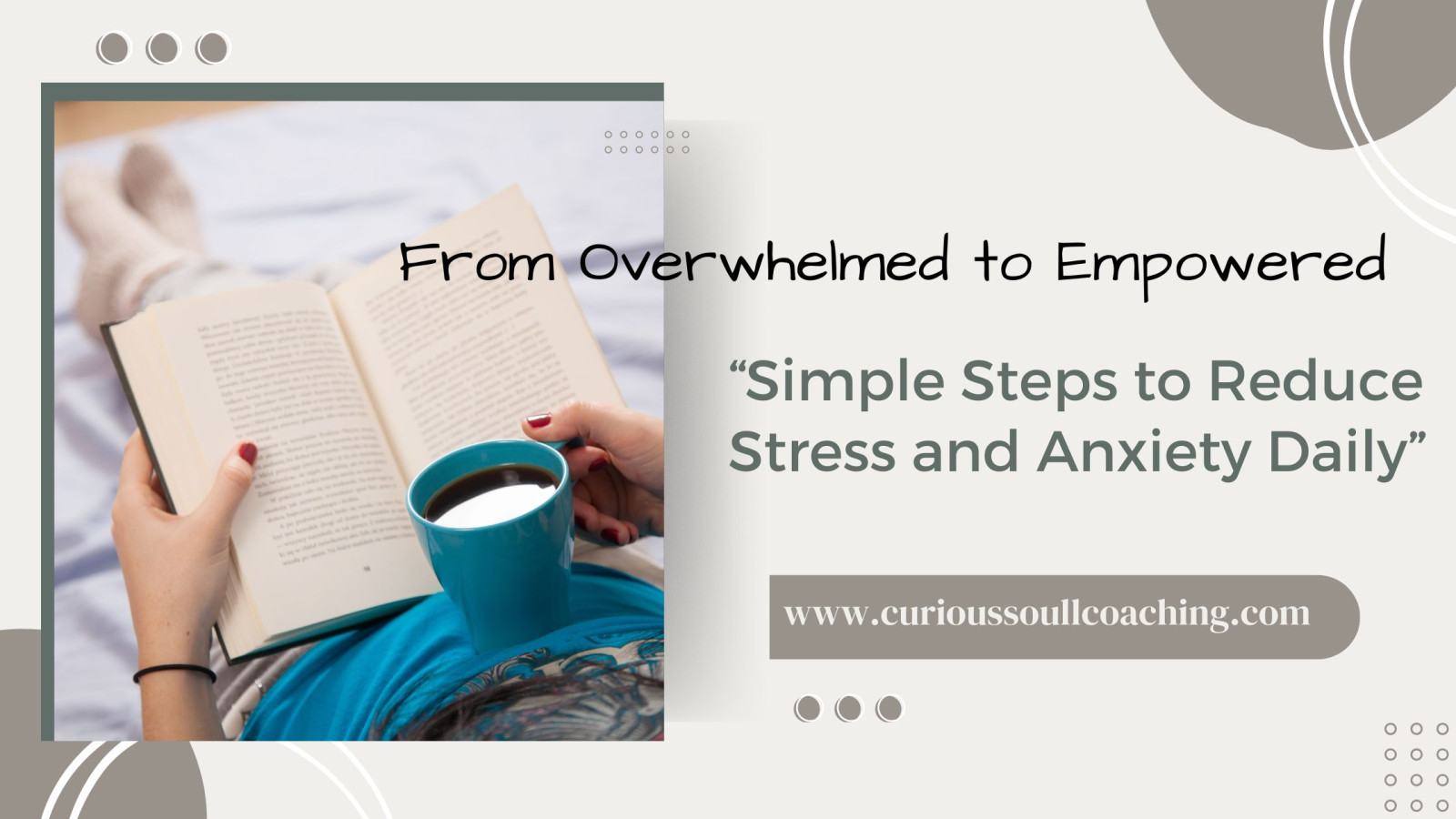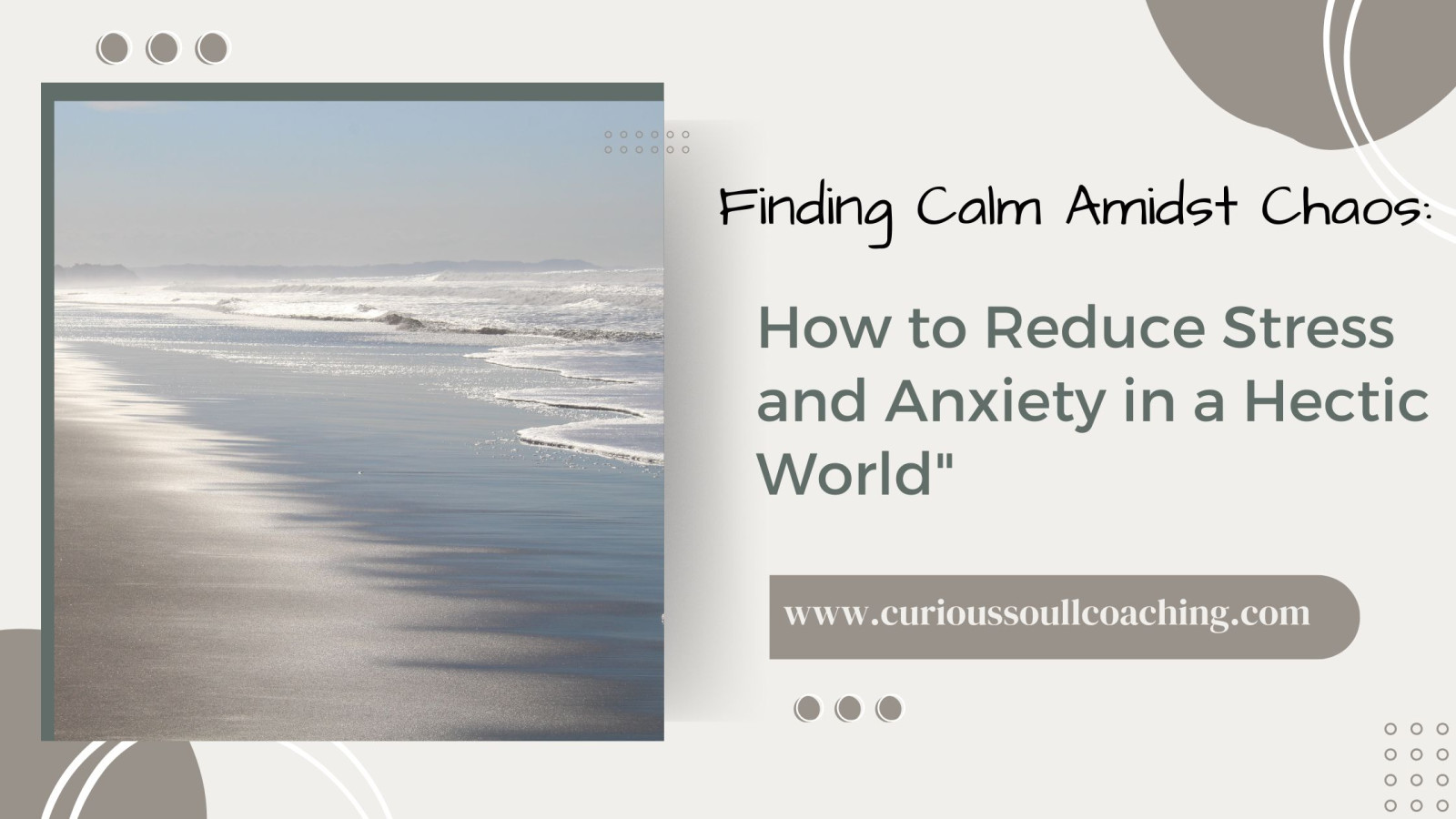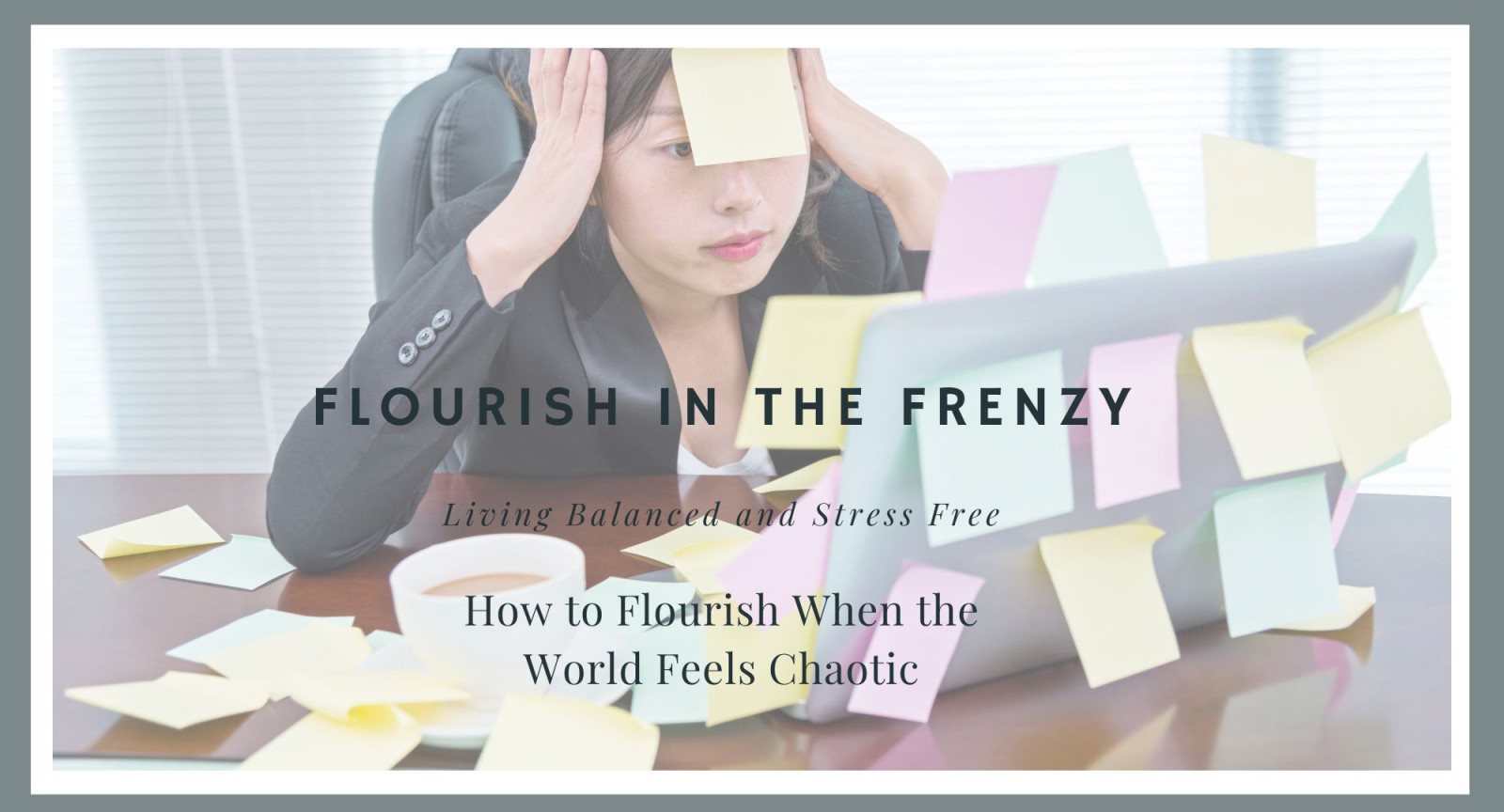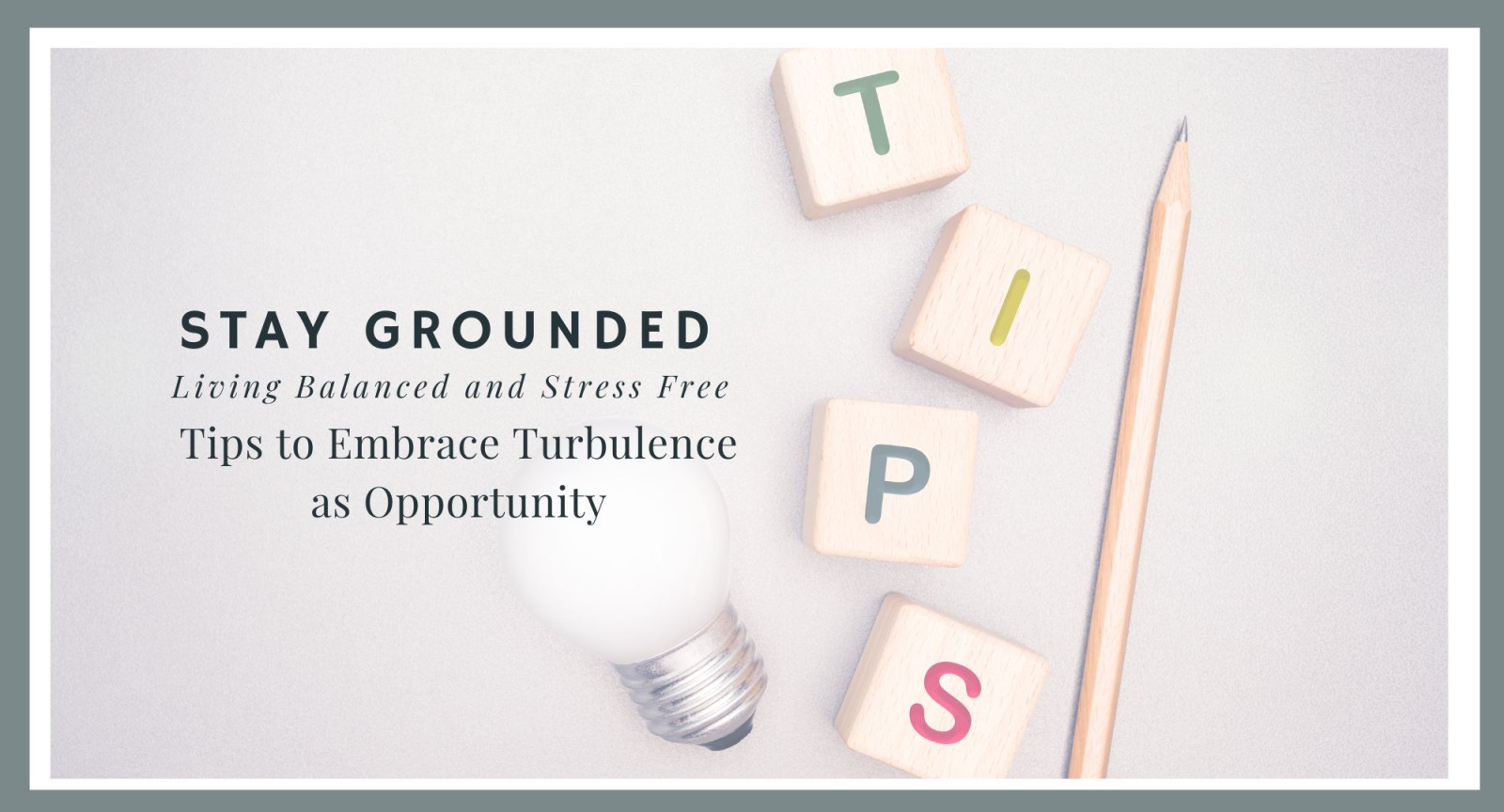
Let’s be real: life can feel like a juggling act with flaming swords. Between your career, family, friendships, fitness goals, finances, faith, and just trying to have a little fun—you might be wondering, “How does anyone keep it all together without losing their mind?”
The truth is, balance isn’t about doing everything perfectly. It’s about creating alignment between what matters most to you and how you actually spend your time and energy. As a mindset and thought coach, I help people like you take back control of their emotional, mental, and physical wellness with real, actionable steps—no fluff, no overwhelm.
Today, we’re diving into how you can bring harmony to the seven key areas of life by getting clear on your personal values, developing a life vision, and setting daily goals that work for you.
Why These 7 Areas Matter
Before we get into the “how,” let’s talk about the “why.” The 7 key areas—family, fitness, finance, career, fun, friends, and faith—make up the core of your everyday experience. When one of these areas is off, it can throw your whole system out of whack.
Ever tried focusing on your job when your finances are stressing you out? Or enjoyed time with friends when you’re feeling spiritually disconnected? It’s tough.
That’s why balance doesn’t mean equal—it means intentional. Ready to learn how? Let’s do this.
Step 1: Start With Your Values
You can’t create balance if you don’t know what you truly value. Not what society says you should value—but what actually lights you up.
Try this:
List out the 7 life areas: family, fitness, finance, career, fun, friends, and faith.
Next to each one, jot down 1–2 words that reflect your personal value in that area. For example:
List out the 7 life areas: family, fitness, finance, career, fun, friends, and faith.
Next to each one, jot down 1–2 words that reflect your personal value in that area. For example:
- Family: Connection, Quality Time
- Fitness: Energy, Strength
- Finance: Freedom, Security
- Career: Purpose, Growth
- Fun: Adventure, Play
- Friends: Support, Laughter
- Faith: Peace, Trust
These words become your compass. When your choices align with these values, you create flow instead of friction.
Step 2: Craft Your Life Vision
Now that you’ve identified your values, it's time to imagine what a balanced life looks and feels like.
Ask yourself:
- What would a deeply connected family life look like?
- How do I want to feel in my body?
- What kind of financial life gives me peace?
- What’s the purpose behind my work?
- What’s my definition of fun?
- Who are the kinds of friends I want in my circle?
- What does a nourishing faith practice look like to me?
Write a short paragraph for each area that paints a picture of your ideal. This doesn’t have to be perfect—just honest. This is your vision board in words.
Step 3: Set Simple, Daily Action Steps
Big goals are exciting, but daily action is what builds the dream. Let’s break your vision down into micro-moves.
Here are beginner-friendly ideas to get started:
Family
Action: Schedule a 15-minute check-in with your partner or kids each day.
Why it works: It builds connection and presence without requiring hours of time.
Why it works: It builds connection and presence without requiring hours of time.
Fitness
Action: Move your body for just 10 minutes each morning—walk, stretch, dance, anything!
Why it works: Consistency is more powerful than intensity when building habits.
Why it works: Consistency is more powerful than intensity when building habits.
Finance
Action: Spend 5 minutes reviewing your bank account and categorizing your spending.
Why it works: Awareness is the first step to freedom.
Why it works: Awareness is the first step to freedom.
Career
Action: Start each workday with a “Top 3” priorities list.
Why it works: It creates focus and reduces overwhelm.
Why it works: It creates focus and reduces overwhelm.
Fun
Action: Add one playful thing to your week—game night, hobby time, silly YouTube videos.
Why it works: Joy isn’t a reward; it’s a resource.
Why it works: Joy isn’t a reward; it’s a resource.
Friends
Action: Text one friend today to say “thinking of you.”
Why it works: Connection doesn’t always need long phone calls or meetups. Little moments matter.
Why it works: Connection doesn’t always need long phone calls or meetups. Little moments matter.
Faith
Action: Start or end your day with 3 minutes of silence, prayer, or reflection.
Why it works: It creates space to connect with something bigger than the daily grind.
Why it works: It creates space to connect with something bigger than the daily grind.
Step 4: Track Progress Without the Pressure
Balance isn’t a destination—it’s a rhythm. So celebrate your effort, not just your outcomes.
Use a simple weekly tracker:
- Check off which of the 7 areas you showed up for, even in the smallest way.
- Reflect: What felt good? What felt out of sync?
- Adjust: What can you shift next week to feel more aligned?
This turns balance into a practice instead of a pressure.
Step 5: Keep It Playful and Personal
Life is messy. Some weeks you’ll crush it in your career and barely squeeze in a workout. Other times, you’ll laugh your way through a girls’ night but miss your meditation practice.
That’s okay.
Balance doesn’t mean being perfect in every area every day. It means you’re paying attention—and making choices based on your values, not just your obligations.
Ready to Take the Next Step?
If this post lit a spark in you, imagine what’s possible when you have guidance, accountability, and personalized tools designed just for you.
Let’s make it real.
I’m offering a free 30-minute wellness consult to help you map out a plan that works for your life—not someone else’s version of success.
I’m offering a free 30-minute wellness consult to help you map out a plan that works for your life—not someone else’s version of success.
Click HERE to book your free session and let’s start creating your version of balance—one powerful, peaceful step at a time.
You don’t have to do this alone. And you definitely don’t have to keep spinning your wheels. Let’s build a life you love—together.
In today’s fast-paced world, stress and chaos seem to be constants in our daily lives. From overwhelming workloads to personal challenges, it can feel like we are constantly fighting an uphill battle to maintain balance. The good news is that true peace isn’t found in external circumstances—it’s something we can cultivate within ourselves. By creating an inner sanctuary, we develop the ability to stay calm and grounded no matter what life throws our way.
Your inner sanctuary is a mental and emotional space where you can retreat, recharge, and realign. It’s a practice of fostering resilience, reframing negative thoughts, and taking actionable steps to nurture your emotional, mental, and physical well-being. In this post, we’ll explore how to shift your mindset, reduce stress, and create a lasting sense of inner peace—even in the most chaotic times.
REFRAMING NEGATIVE THOUGHTS: A KEY TO INNER PEACE
One of the biggest barriers to inner peace is negative thinking. When we allow negative thoughts to spiral, they can consume our energy and create unnecessary stress. However, by learning to reframe these thoughts, we can shift our mindset and cultivate a greater sense of control over our emotions.
1. Identify Your Negative Thought Patterns
The first step in reframing negative thoughts is recognizing when they arise. Common negative thought patterns include:
- Catastrophizing – Expecting the worst-case scenario in every situation.
- Black-and-White Thinking – Seeing things as either all good or all bad, with no in-between.
- Personalization – Taking responsibility for things outside of your control.
- Filtering – Focusing only on the negatives while ignoring the positives.
By identifying these patterns, you can begin to challenge and change them.
2. Challenge The Thought
Once you recognize a negative thought, ask yourself:
- Is this thought based on facts or assumptions?
- What evidence do I have that this thought is true?
- What is a more balanced way of looking at this situation?
For example, if you think, “I’m terrible at my job and will never succeed,” challenge it with evidence: “I have received positive feedback before, and I am always improving.”
3. Replace With Empowering Thoughts
Reframing is not about ignoring challenges but about shifting your perspective to one that serves you better. Instead of “I always fail,” reframe it to “I learn and grow from my experiences.”
Practicing this regularly helps rewire your brain to adopt more positive and empowering thought patterns, leading to a more peaceful state of mind.
ADDITIONAL STRATEGIES FOR CULTIVATING YOUR INNER SANCTUARY
1. Create A Daily Mindfulness Practice
Mindfulness helps you stay present and prevents your mind from getting caught in stress-inducing thoughts. Try these mindfulness techniques:
- Deep Breathing – Inhale deeply through your nose, hold for a few seconds, and exhale slowly.
- Meditation – Even five minutes of meditation a day can bring clarity and calm.
- Gratitude Practice – Write down three things you are grateful for each day to shift focus from stress to appreciation.
2. Set Healthy Boundaries
Learning to say “no” and setting boundaries is essential for maintaining inner peace. Protect your energy by limiting interactions with people or situations that drain you.
3. Engage In Physical Movement
Physical activity is one of the best ways to release stress. Whether it’s yoga, walking, dancing, or stretching, moving your body helps clear your mind and reset your emotions.
4. Prioritize Self-Care
Self-care isn’t a luxury—it’s a necessity. Schedule time for activities that nourish you, such as reading, journaling, taking a bath, or engaging in a hobby you love.
5. SURROUND YOURSELF WITH POSITIVITY
The people you spend time with and the content you consume have a significant impact on your mindset. Choose to surround yourself with supportive individuals and uplifting materials, such as books, podcasts, or music that inspire you.
Creating your inner sanctuary is a lifelong practice, but it is one of the most powerful ways to cultivate peace and reduce stress. By reframing negative thoughts, practicing mindfulness, setting boundaries, and prioritizing self-care, you can build an unshakable foundation of inner calm—no matter what external challenges arise.
If you’re ready to take the next step in reclaiming your peace and wellness, I invite you to schedule a free consultation with me. Together, we’ll create a personalized action plan to help you manage stress and design the life you truly want to live. Click HERE to schedule your free session today!

In today's fast-paced world, feeling overwhelmed seems almost like a badge of honor. Balancing work, family, personal goals, and social life can feel like juggling flaming swords while walking a tightrope. The constant demands of everyday life can lead to stress, anxiety, and even burnout if not managed properly. It's essential to equip ourselves with practical tools and strategies to combat these pressures. That's where the power of mindset and thought can transform your life. Welcome to "Your Daily Dose of Calm," where we'll explore strategies for stress reduction and guide you to reclaim serenity amidst chaos.
Understanding the Nature of Stress
Before diving into strategies, let's briefly examine what stress actually is. Stress is a natural response to perceived threats or challenges. This response is part of our survival mechanism but can become counterproductive when triggered by everyday scenarios. It has mental, emotional, and physical repercussions—from persistent worry and tension to headaches, sleep disturbances, and digestive problems. With the right mindset, however, you can turn stress from an enemy into an ally that prompts growth and innovation.
Reframe Negative Thoughts: Your Pathway to Peace
One of the most effective ways to manage stress is through reframing negative thoughts. Our thoughts are incredibly powerful—they shape our emotions and, ultimately, our behaviors. Here’s how you can start turning negative thought patterns into more positive ones:
- Awareness is Key: The first step in reframing negative thoughts is identifying them. Negative thoughts might be so ingrained in your daily routine that they go entirely unnoticed. Take a moment to write down recurring thoughts when you feel stressed. Awareness is the cornerstone of change.
- Challenge the Thought: Once you've identified a negative thought, question its validity. Ask yourself: "Is this thought based on facts, or is it an irrational belief?" Often, we catastrophize situations or fall prey to all-or-nothing thinking. Reevaluate and consider if the reality is as dire as your thought suggests.
- Shift Your Perspective: Now that you’ve challenged the thought, it’s time to change your perspective. Try asking, "What would I say to a friend who is thinking this way?" Shifting your perspective can help break down negative thinking and replace it with more balanced, objective thoughts.
- Practice Gratitude: Incorporating gratitude into your daily routine can help shift your mindset from what you're lacking to what you have. Keep a daily gratitude journal and list things you're thankful for, no matter how small. Gratitude has been linked to improved mental wellness and lower stress levels.
- Outcome Visualization: Imagine a positive outcome for situations that typically stress you out. Visualization helps convince your mind of the possibility of success, reducing anxiety and setting the tone for positive actions.
- Mindfulness and Breathing Exercises: This ancient practice of focusing on the present can improve your overall well-being. Start each day with a short mindfulness session or deep breathing exercises. This practice sharpens your ability to focus and keeps stress from escalating.
Embrace a Life of Clarity and Calm
Life doesn't have to be a series of overwhelming episodes. With the right strategies, like reframing negative thoughts, you can take control of your mental and emotional wellness, reducing stress in the process. By reshaping your thoughts, you reshape your reality, allowing yourself to respond to life’s challenges with clarity and calm.
You don’t have to navigate this journey alone. As a mindset and thought coach, I'm here to support you every step of the way. If you're ready to take control of your emotional, mental, and physical wellness and move towards the life you desire, I invite you to schedule a free wellness consult with me.
During our session, we’ll explore your unique challenges and create a personalized plan to help you manage stress more effectively and achieve your wellness goals.
Be Grateful. Have Faith. Live Your Best Life!
Sonja
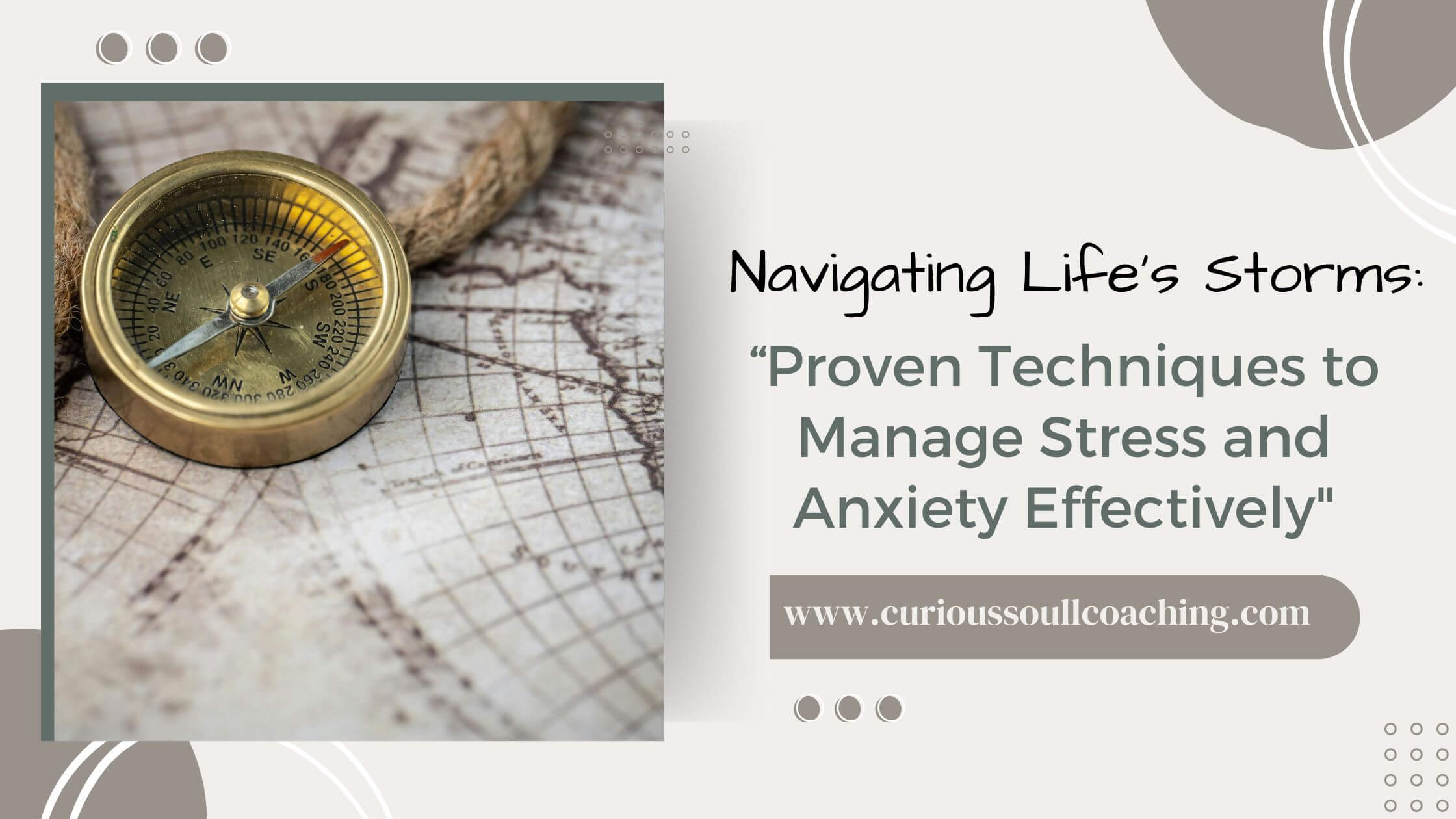
Life, with all its unpredictability, can sometimes feel like an endless series of storms. While some are mere drizzles, others hit us with the force of a hurricane, knocking us off balance and leaving destruction in their wake. The stress and anxiety that accompany these storms can quickly spiral out of control if not effectively managed. For many, these feelings have become a regular part of daily life, dictating their actions, thoughts, and overall well-being. However, by learning how to navigate these turbulent times, it's entirely possible to take control and ultimately achieve the life we aspire to live.
This blog post will serve as your compass, guiding you through the proven techniques that can help manage stress and anxiety effectively. As a mindset and thought coach, my goal is to empower you with actionable strategies that will not only reduce stress but also enhance your emotional, mental, and physical wellness.
Understanding the Anxiety Spiral
Before diving into solutions, it's essential to understand the nature of the anxiety spiral. This spiral can be likened to a vortex, where stress and anxiety feed off each other, dragging you deeper into a cycle that's often hard to break. It begins with a stressful event or thought, triggering feelings of worry. These feelings amplify, resulting in physical symptoms like a racing heart or shortness of breath, which can, in turn, exacerbate anxious thoughts. Left unchecked, this cycle can become an all-consuming force, affecting every aspect of your life.
The anxiety spiral is powerful, but it's essential to recognize that it's also predictable. By understanding its mechanics, you can anticipate the onset of anxiety and deploy strategies to manage your response effectively.
Proven Techniques to Manage Stress and Anxiety
- Mindfulness and Meditation
In recent years, mindfulness has moved beyond being just a buzzword to becoming a cornerstone of effective mental health management. Practicing mindfulness involves focusing on the present moment without judgment. This practice can be as simple as taking a few minutes every day to focus on your breath or as involved as participating in guided meditation sessions.
By grounding yourself in the present, you reduce the power of future-focused anxiety. Studies show that regular mindfulness practice can decrease symptoms of anxiety and improve overall mood.
- Cognitive Behavioral Techniques (CBT)
Cognitive Behavioral Techniques are widely used tools that help individuals break the negative thought patterns contributing to the anxiety spiral. CBT involves identifying negative thought patterns and actively working to challenge and alter them. This might mean re-framing a situation to see it in a more positive light or developing problem-solving skills that address stressors head-on.
- Physical Activity
Exercise is a powerful stress reliever. Physical activities like walking, jogging, yoga, or even dancing can effectively reduce stress hormones such as cortisol, while increasing the production of endorphins—the body's natural mood boosters. Regular physical activity also improves sleep, which is commonly disrupted by stress and anxiety.
- Breathing Exercises
Anxiety often tricks the body into entering a state of fight or flight. Deep, slow breathing helps counteract this response by stimulating the parasympathetic nervous system, which promotes relaxation and calm. Techniques such as diaphragmatic breathing or the 4-7-8 method can be practiced anywhere and are highly effective in curbing acute anxiety symptoms.
- Healthy Lifestyle Choices
Nutrition plays a critical role in mental health. Consuming a balanced diet rich in fruits, vegetables, lean proteins, and whole grains can help stabilize mood and energy levels. Reducing caffeine and sugar intake can also prevent the triggering of anxiety symptoms. Ensuring that you get enough sleep and practice good sleep hygiene is equally vital in managing stress effectively.
- Building a Support System
Humans are inherently social creatures, and connecting with others is a powerful way to combat stress. Whether it's talking to a friend, joining a support group, or writing in a journal, expressing your thoughts and emotions can provide relief. Surrounding yourself with supportive individuals who understand and can offer guidance is invaluable.
Navigating life's storms is a journey that requires equipping yourself with the right tools and strategies. By understanding the anxiety spiral and implementing proven techniques like mindfulness, CBT, physical activity, and lifestyle changes, you can regain control and steer your life in a positive direction. Remember, while stress and anxiety are natural responses to life's challenges, they don't have to dictate your life story.
As you embark on this path to wellness, I invite you to take the first step towards a more balanced life.
Schedule a free wellness consultation today and discover how customized coaching can help you develop the skills needed to manage stress and achieve the life you desire. Reach out, and let's work together to transform storms into opportunities for growth and resilience.
To book your complimentary consult, simply click HERE, and start your wellness journey today.
Remember, you are the captain of your ship, and your life’s most breathtaking journey is just beginning.
Be Grateful. Have Faith. Live Your Best Life.
Sonja
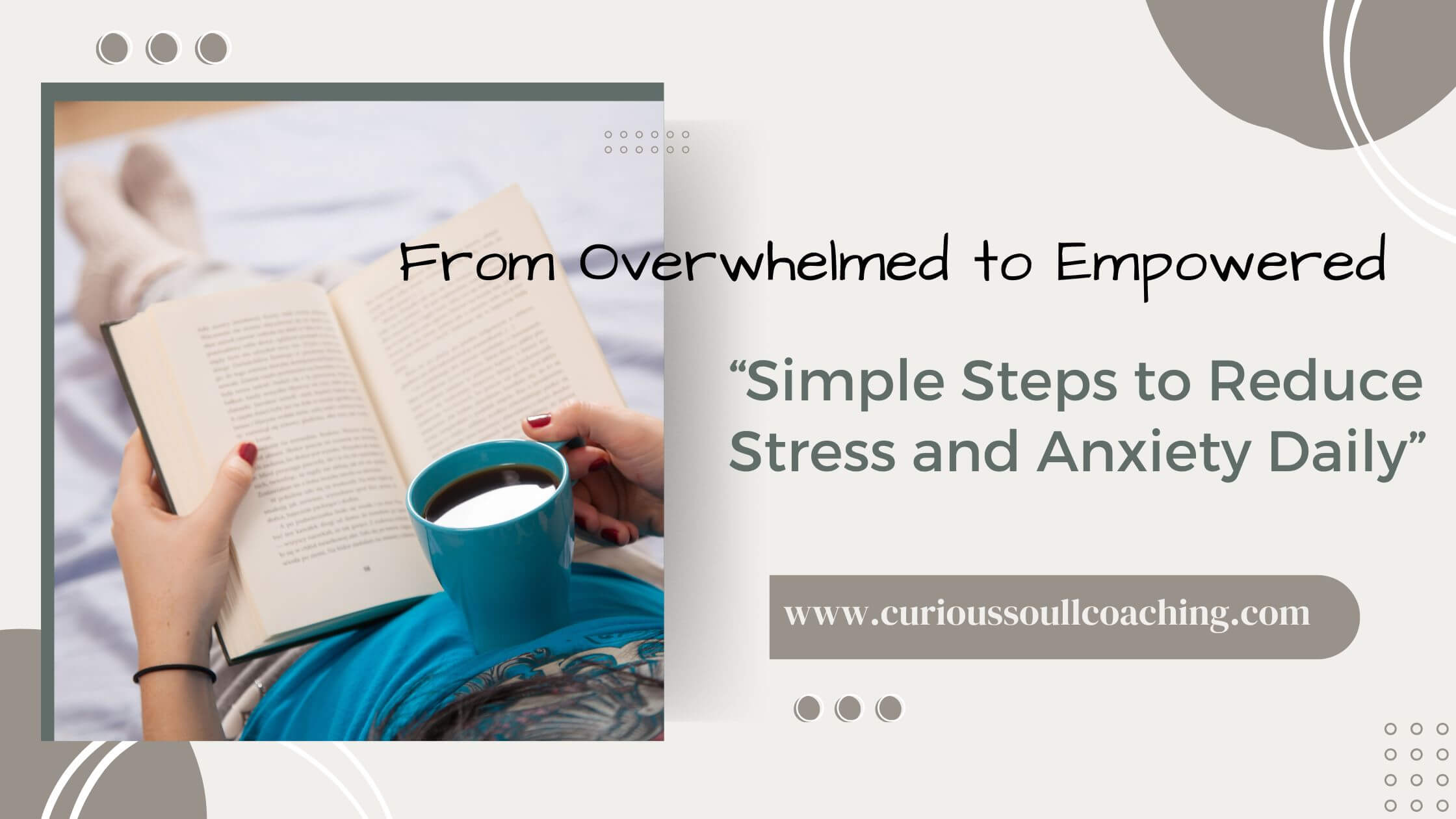
In today's fast-paced world, it's no surprise that many of us feel overwhelmed by stress and anxiety. These emotions can have a profound impact on our emotional, mental, and physical well-being, making it difficult to achieve the life we desire. However, by understanding the anxiety spiral and learning simple, actionable steps to break free from its grasp, we can transform our lives from a state of overwhelm to one of empowerment. As a mindset and thought coach, I've helped countless individuals take control of their wellness and reduce stress through practical strategies. In this blog post, we'll explore the anxiety spiral and provide you with the tools you need to overcome it daily.
Understanding the Anxiety Spiral
The anxiety spiral is a phenomenon where a single anxious thought can quickly escalate into a cycle of increasing worry and stress. It often begins with a triggering event or thought, which then leads to negative self-talk and catastrophic thinking. As our minds become consumed by these thoughts, our bodies respond with physical symptoms such as increased heart rate, shallow breathing, and muscle tension. These physical sensations, in turn, reinforce the anxious thoughts, creating a vicious cycle that can be difficult to break.
There are several factors that can contribute to the development and perpetuation of the anxiety spiral:
- Negative self-talk: The way we speak to ourselves can significantly impact our anxiety levels. When we engage in negative self-talk, we reinforce the anxious thoughts and make it more challenging to break free from the spiral.
- Catastrophic thinking: This type of thinking involves imagining the worst-case scenario and believing that it will inevitably come true. Catastrophic thinking can quickly escalate the anxiety spiral, as it fuels our fear and worry.
- Avoidance behaviors: When we feel anxious, our natural response is often to avoid the situations or thoughts that trigger our anxiety. While this may provide temporary relief, it ultimately reinforces the anxiety spiral by preventing us from confronting and overcoming our fears.
- Lack of self-care: Neglecting our emotional, mental, and physical well-being can contribute to the anxiety spiral. When we don't prioritize self-care, we're more vulnerable to stress and anxiety, making it harder to break free from the cycle.
Simple Steps to Reduce Stress and Anxiety Daily
Now that we understand the anxiety spiral, let's explore some simple, actionable steps you can take to reduce stress and anxiety on a daily basis:
- Practice mindfulness: Mindfulness involves being present in the moment and non-judgmentally observing your thoughts and feelings. By practicing mindfulness, you can break the cycle of negative self-talk and catastrophic thinking that fuels the anxiety spiral. Start with just a few minutes of mindful breathing each day, gradually increasing the duration as you become more comfortable with the practice.
- Challenge your thoughts: When you notice yourself engaging in negative self-talk or catastrophic thinking, take a moment to challenge those thoughts. Ask yourself, "Is this thought based on facts, or is it my anxiety talking?" By questioning your thoughts, you can begin to reframe them in a more balanced and realistic way.
- Engage in physical activity: Regular exercise has been shown to reduce stress and anxiety by releasing endorphins and promoting relaxation. Find an activity you enjoy, such as walking, yoga, or dancing, and make it a part of your daily routine.
- Prioritize self-care: Make self-care a non-negotiable part of your daily life. This can include activities such as taking a warm bath, reading a book, or spending time in nature. By prioritizing your emotional, mental, and physical well-being, you'll be better equipped to manage stress and anxiety.
- Practice gratitude: Cultivating a gratitude practice can help shift your focus away from anxious thoughts and towards the positive aspects of your life. Take a few minutes each day to write down three things you're grateful for, no matter how small they may seem.
- Connect with others: Social support is crucial for managing stress and anxiety. Make time to connect with friends, family, or a support group, and don't hesitate to reach out when you need a listening ear or a helping hand.
- Set boundaries: Learn to say no to things that drain your energy and prioritize activities that bring you joy and fulfillment. By setting healthy boundaries, you'll reduce the likelihood of feeling overwhelmed and anxious.
The anxiety spiral can be a challenging cycle to break, but by understanding its components and implementing simple, daily strategies, you can take control of your stress and anxiety. Remember, you have the power to transform your life from one of overwhelm to one of empowerment.
If you're ready to take the next step in your journey towards wellness, I invite you to schedule a free consultation with me. As a mindset and thought coach, I specialize in helping individuals like you reduce stress and achieve the life they desire through actionable steps. During our consultation, we'll discuss your unique challenges and create a personalized plan to help you break free from the anxiety spiral once and for all.
Don't let stress and anxiety hold you back any longer. , take the first step towards a more empowered life by scheduling your free Inquiry consult today. Together, we can transform your life and help you achieve the emotional, mental, and physical well-being you deserve.
